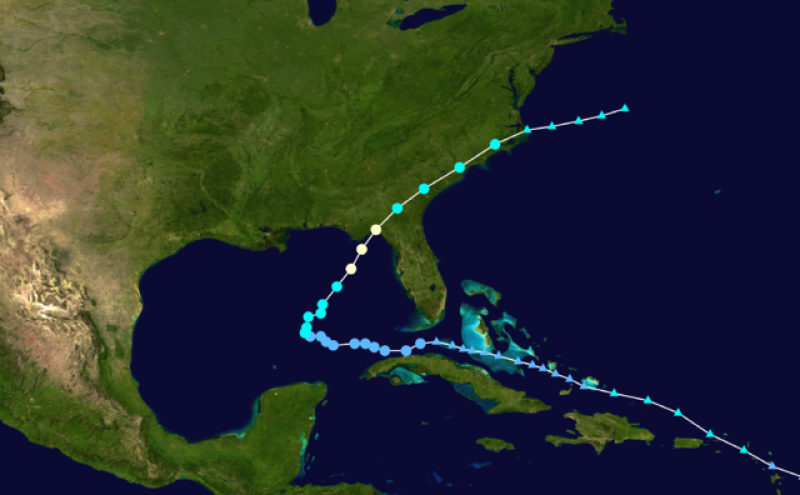
Hurricane Hermine moved away from the East Coast on Sunday and was downgraded to a tropical storm, but it appeared to have gained strength again causing high waves along the coast.
Weather experts have warned that it could again be upgraded to hurricane, even as beaches remained closed amidst storm warnings. However, the hurricane is expected to hover over the sea before it again weakens by Tuesday.
Rip current threats were issued for the coastline of New York, even though it appeared to have weakened and tropical storm warnings for the city were cancelled.
The storm is expected to move towards Atlantic Canada but may weaken before reaching there, sparing the eastern provinces of heavy tropical wind and rainstorms.
"It probably won't have any impact for winds and minimal impacts for rain. We should be reasonably safe," said Canadian meteorologist Doug Mercer.
As of 11 PM EST on Monday, Hermine was at about 120 miles east of Long Islands, according to National Weather Service. The hurricane's top speed by late Monday evening was 65 mph, as it moved at an average speed of 12 mph towards the northeast.
Two people have died in the storm. One of them was driving a 18-wheeler truck which was toppled by the hurricane. The other person died when a tree fell on him.
Video footages and images of the flooding showed streets drowned in several feet of water in some counties, while at many other places people were seen cleaning up their homes and businesses after the storm subsided. In many areas, felled trees were being removed to clear the neighborhoods and roads.
Millions of people along the eastern coast are affected by the tropical storm.
Widespread damage and power outages were reported from parts of Florida, which was the first state to be hit by Hermine. Pasco County residents were ordered to evacuate the residential area because of rapidly rising water in the Anclote River. County emergency services said that the river may pass into a major flood stage.
Governor Rick Scott toured the affected areas in Florida including Levy, Taylor, and Pasco counties on the Gulf Coast and surveyed the damage caused by the flooding from the tropical storm.
Over 200,000 people in the state were left without power when the storm hit the state.
Scott said that the government was working to restore electricity at the earliest.
'I want everybody to have their power. I want them to be able to take a hot shower,' he said.
By Sunday evening, power was back in most of the homes, but about 5,300 residents were still without electricity.
Another of the governor's priority was to empty the streets of the flood water, he said, as he feared that it could spread mosquito-borne diseases including Zika.
"We have to get rid of standing water," Scott was quoted as saying by CBS. "That's the most important thing we can do now and after this storm hits."
Other states of Georgia, Carolinas, and Virginia also faced massive power outages and infrastructure damages from flooding.



















